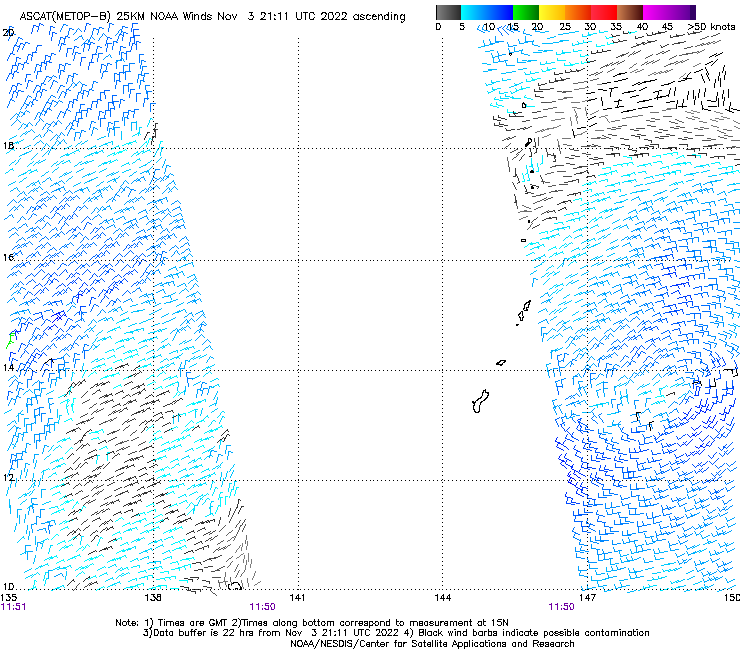SAR data over Guam
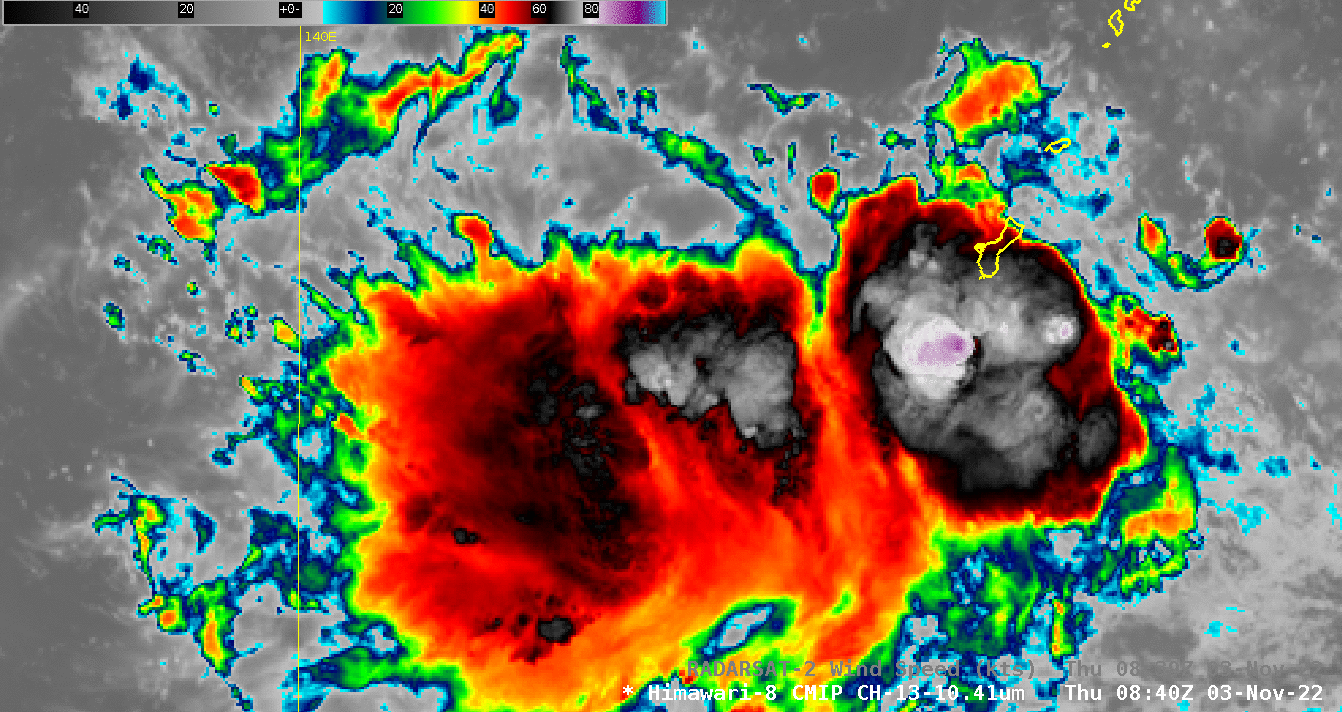
After a request from the National Weather Service Pacific Region, Synthetic Aperture Radar (SAR) data are available over/around Guam. These data are available at this NOAA/NESDIS website, and also via anonymous ftp from ftp.star.nesdis.noaa.gov. There will be 10 overpasses between 1 and 24 November. The first RADARSAT overpass occurred at 0839 UTC on 3 November, and it is shown above in a toggle with Himawair-8 Band 13 imagery. Very strong convection to the southwest of Guam (inferred from the cloud tops as cold as -90oC — the purple enhancement within the white) is associated with surface winds exceeding 40 knots. A zoomed-in toggle is shown below.
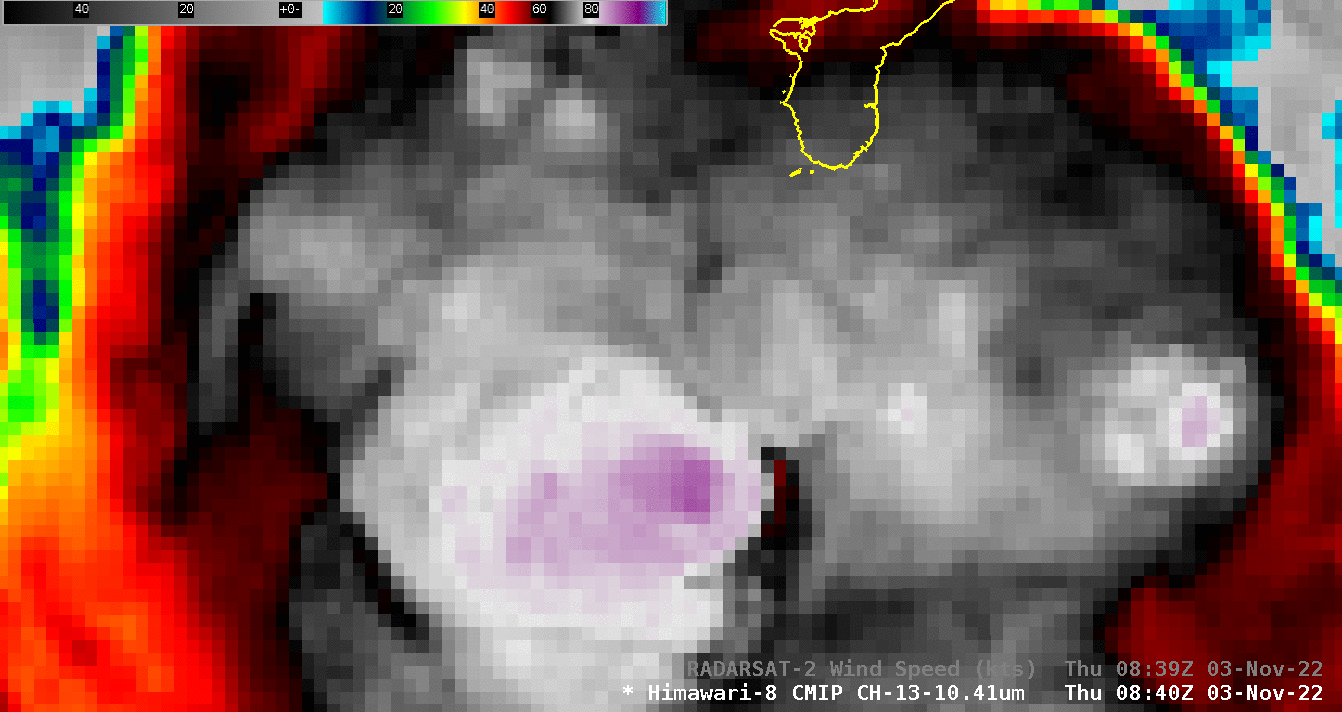
Radar estimates of hourly rainfall ending at 0839 UTC, below, (courtesy Brandon Aydlett, SOO at WFO Guam) show a large region with totals exceeding 1 inch during the previous 60 minutes, with small regions of 1.5 – 2 inches apparent.
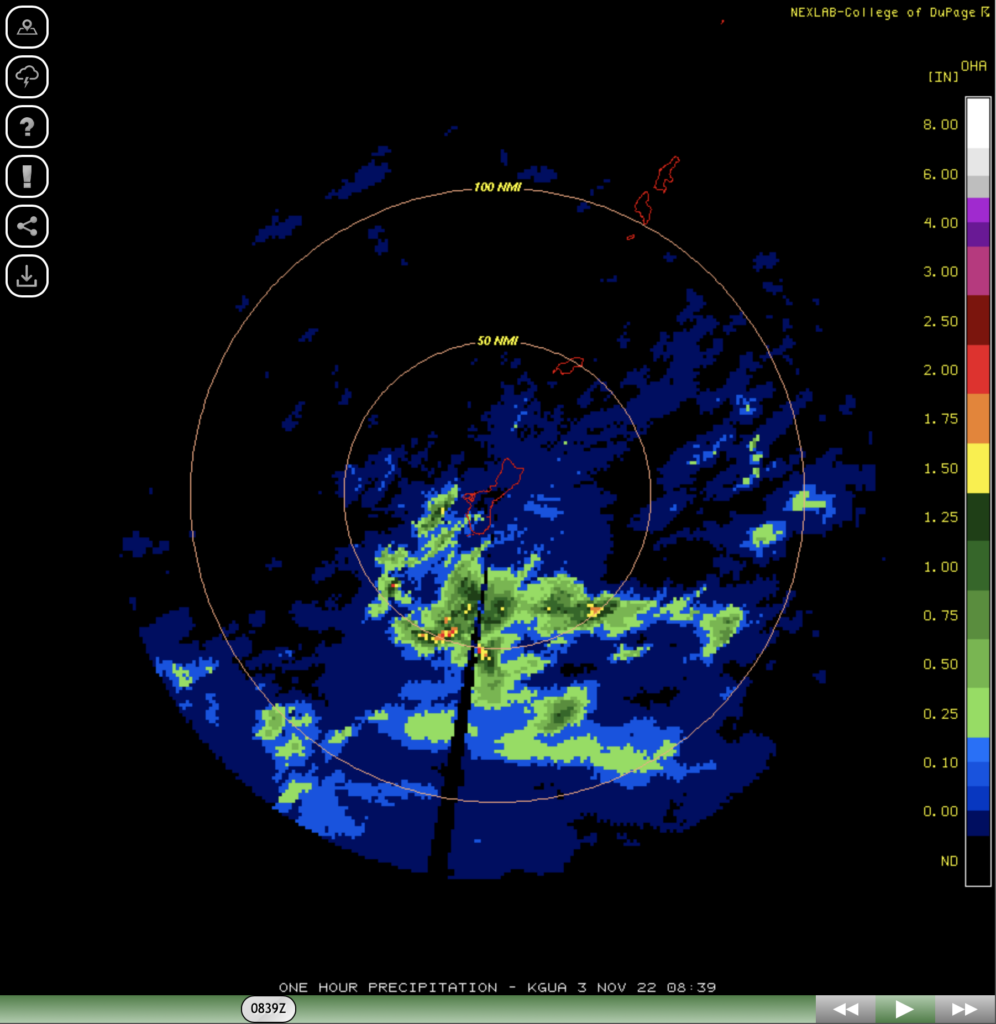
The presence of ice in a cloud will increase SAR backscatter, and when that happens, wind speeds that are larger than observed will be indicated. This is probably happening on this day. NRCS (Normalized Radar Cross Section) imagery from this time, available here, from this website, and shown below (with computed wind speeds shown beneath that — you’ll see they match the AWIPS presentation above), show the characteristic feathery appearance that accompanies SAR detection in regions of significant cloud ice. The conclusion would be that this convection with very cold cloud tops was likely not producing very strong surface winds at 0839 UTC.
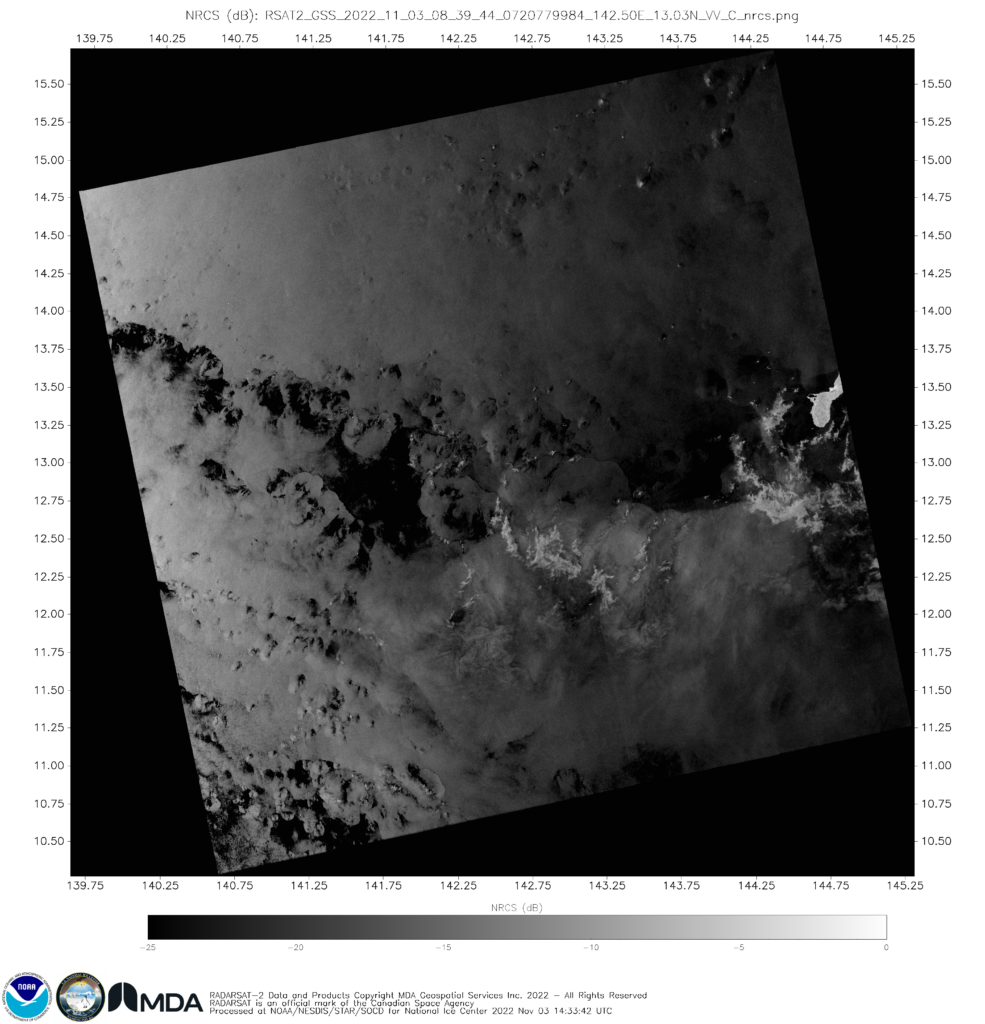
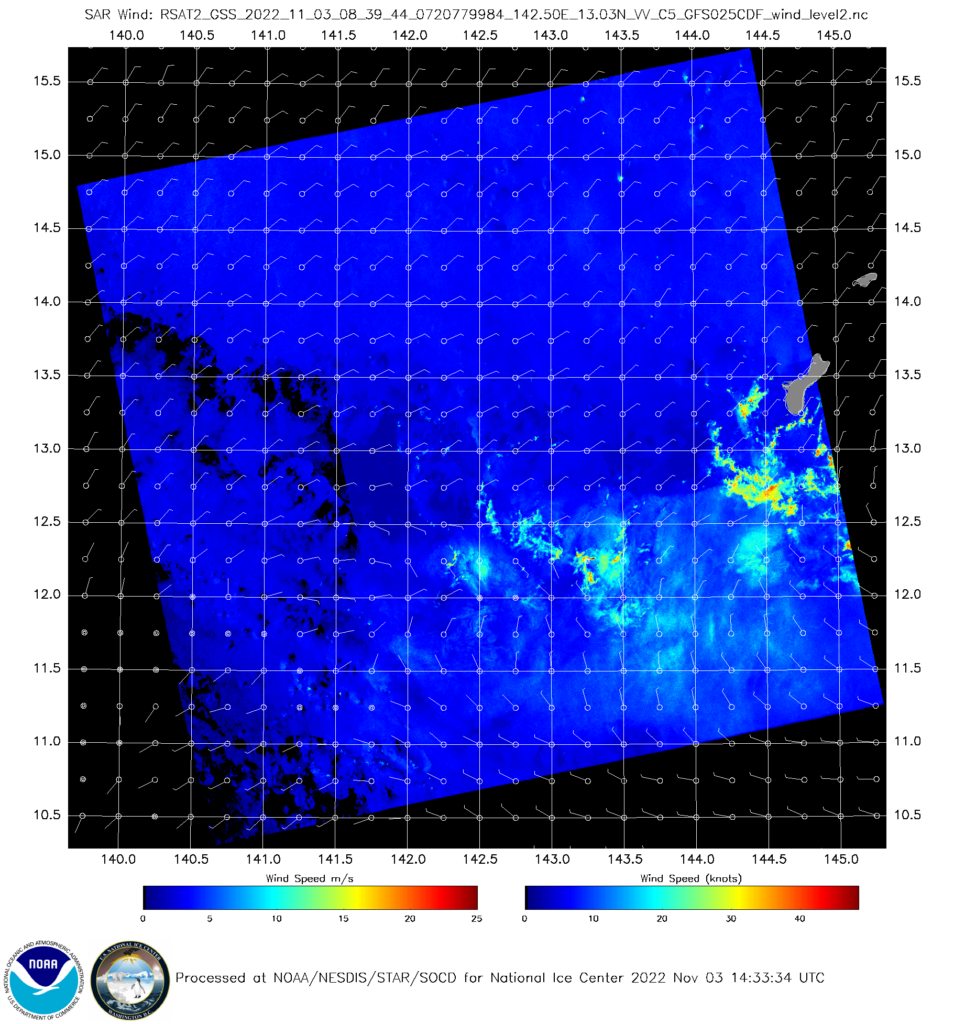
The SAR-derived light winds that are occurring near Guam are in agreement with Advanced Scatterometer (ASCAT) data from MetopB (shown below) and MetopC (here), and from windspeed observations from AMSR-2 on GCOM-W1 (here), as taken from the NOAA ‘manati’ website.
